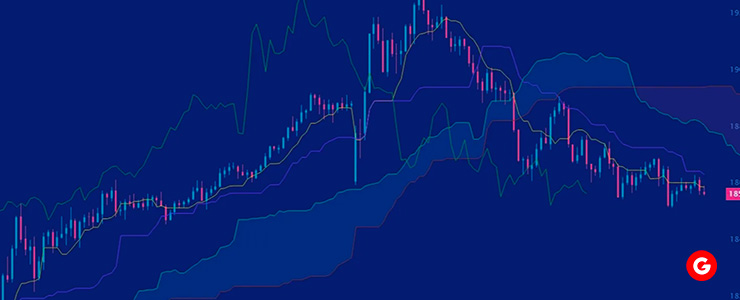You can earn an income in a lot of ways. But, if you have a risk appetite, the foreign exchange market will serve you the best. Although, some of these risks can be avoided by hedging with forex futures.
A forex hedge is a transaction that protects you from the risks of an unexpected move in the exchange rate
Learning the hedging process with forex futures is extremely crucial. It is the best way forward to avoid the risks that come from the constantly changing prices in the market.
What is Hedging in Forex?
Hedging is the strategy most often used to offset the risks that come with the changes in the exchange rate. The main purpose is to shield your international sales that might take place in the future.
These hedges are held by multiple market participants, including traders, investors, and businesses. Generally, they hedge their currency by holding their earnings from a foreign currency in their currency. So, even if the foreign currency’s value drops, they will not incur any losses.
Hence, hedging one’s currency is a risk management strategy for fluctuating exchange rates.
The end goal is not to make profits; it is to protect them. This is not speculation, where one is trying to make profits through his/her prediction.
How Does Hedging Work?
The purpose behind hedging is to safeguard yourself from losses that you might incur due to the transient nature of the forex market. Here, you are only shielding yourself against a portion of the risks. This is because there is a likelihood that the cost of the hedge might be greater than the actual profits, resulting in an overall loss.
While hedging with forex futures, you open up an extra position that might be used if the exchange rate changes. This process involves the buying or selling financial instruments to balance your present position. As a result, your risk is reduced.

Types of Currency Hedging
Hedging with forex futures requires an understanding of the basic strategies. The most common ways of hedging your currency are:
Forward Currency Hedging
Here, in the simplest words, you buy a “forward”. This can be bought in a currency of your choice.
For example, if you are a company in the USA that sells in Singaporean dollars, you can simply enter into an agreement to receive Singaporean dollars in the future.
By doing this, you can have the current base rate of today. But you risk losses if the exchange rates don’t move in your favor.
Futures Currency Hedging
As the name suggests, futures are used to protect your risks of future currency movements that might go against you. However, future markets are mostly used to hedge against the potential risk of changes in the interest rate.
Here, you sell an option to buy the currency in the future only. You do this by selling the contract with a last date.
At the end of this, you buy or sell the currency at the price that was chosen in the futures contract in advance.
But futures might not always be the best option. They are more complex than others, and one might encounter technical difficulties. Moreover, future prices are higher than regular currency contracts.
This approach is more viable for big companies or individuals and not great for novice traders.
Cross-Currency Swaps
These are generally used to hedge against the possibility of the currency moving in an unfavorable direction in the future. By doing this, you create a synthetic position that is close to holding a general currency position.
During a swap, the two parties involved come to terms to exchange a fixed amount at a particular point in the future that is pre-decided.
Here, you could exchange one currency for the other or exchange two different currencies.
This is a tedious way of hedging, but it is very impactful. It could be used in situations where you are in possession of a particular currency and now want to reduce your exposure to it.
Basic Risk Hedging
In this strategy, future cash flows that are in contact are turned into risk-free cash flows. This reduces the basic risk, lessening the risk of loss on the cash flows.
Basic risks are of two types:
- Input basic risk concerns the model’s input parameters. It is based on assumptions that differ from the actual market.
- Model basis risk: This is based on the choice of the model.
For example, a model could be related to a different market. This means that its functioning will not be possible in the desired market.
Basic risk hedging is also done through cross-currency swaps. It allows you to convert assets from one currency to the same asset in a different currency. Hence, your risks are hedges against the fluctuations in foreign currency.
If you have been looking forward to trading in the foreign exchange market but don’t know where to begin, we have got you covered. FXGiants is the best place to trade your currencies and start making extra profits today.

FAQs
Is hedging possible in forex?
Forex hedging is possible and generally profitable for speculators. However, it is important to note that hedging comes at a cost, so one should know how to balance protection and profits.
Why to hedge forex risks?
Risks in the forex market are always high. However, hedges can help avoid many potential losses. This is especially important for big companies, as they reduce losses and protect asset value and cash flows.
What is 100% hedging?
100% hedging refers to arbitraging interest rates among brokers. It is one of the safest and most profitable ways to hedge.
Is hedging profitable?
Hedging could lead to a potential profit for speculators but not for big companies. For them, the main reason behind hedging is to avoid losses.
Conclusion
Hedging is a strategic process of avoiding losses in the foreign market. It requires a thorough understanding and knowledge of how the market works. However, once understood, both individuals and companies can mitigate their risks through this.
By hedging with forex futures, a possible mistake on the primary trade and its losses are eliminated or reduced to a certain level. Hedging is crucial to forex trading and should be applied to all asset classes.
DISCLAIMER: This information is not considered investment advice or an investment recommendation, but is instead a marketing communication
